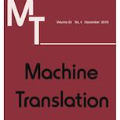Text image machine translation (TIMT) aims to translate texts embedded in images from one source language to another target language. Existing methods, both two-stage cascade and one-stage end-to-end architectures, suffer from different issues. The cascade models can benefit from the large-scale optical character recognition (OCR) and MT datasets but the two-stage architecture is redundant. The end-to-end models are efficient but suffer from training data deficiency. To this end, in our paper, we propose an end-to-end TIMT model fully making use of the knowledge from existing OCR and MT datasets to pursue both an effective and efficient framework. More specifically, we build a novel modal adapter effectively bridging the OCR encoder and MT decoder. End-to-end TIMT loss and cross-modal contrastive loss are utilized jointly to align the feature distribution of the OCR and MT tasks. Extensive experiments show that the proposed method outperforms the existing two-stage cascade models and one-stage end-to-end models with a lighter and faster architecture. Furthermore, the ablation studies verify the generalization of our method, where the proposed modal adapter is effective to bridge various OCR and MT models.
翻译:暂无翻译




